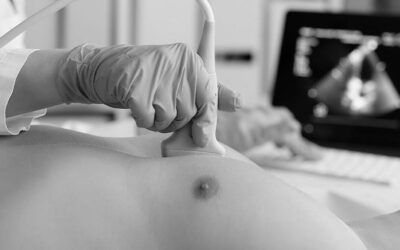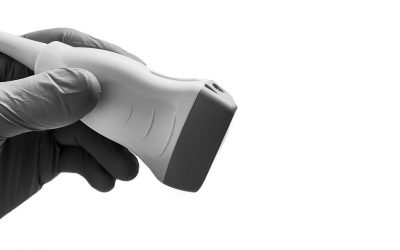The origin of intravenous therapies
One of the greatest technological advances linked to medicine is intravenous therapies.
At the forefront of these therapies are infusion pumps: devices that release specific amounts of food, blood, or medication directly into the patient’s circulatory system, under the skin, or into the central nervous system, as in the case of epidural anaesthesia.
Although the first recorded attempts at intravenous therapy dates back to the 15th century, it was not until the 17th century that the first intravenous access device was invented, leading to the first successful blood transfusion in 1665.

In the early 19th century, the first prototypes of infusion pumps were invented with the aim of controlling the flow rate during intravenous procedures.
During the 20th century, needles were refined, rubber tubing was replaced with plastic tubing, and vacuum pumps were designed to reduce the risk of air embolism.
But it was not until the 1970s that the first ambulatory pump was invented, allowing patients to enjoy freedom of movement, as well as outpatient treatments for those who required precise doses at regular intervals.

Elastomeric Pumps
Elastomeric pumps are single-use, non-electronic medical devices that infuse medication in a controlled manner and at a specific rate. They are fully portable and can be easily carried by the patient for home treatment.
They consist of a rigid or soft plastic casing containing an elastomer that releases an energy, which in turn results in constant pressure on the drug to be infused. Its flow rate is controlled by a calibrated capillary present in the infusion tube.

Although they are used for various treatments and in various services (antibiotic infusion, antiretroviral therapy, chronic pain units, etc.), one of the most widespread is their use in chemotherapy treatments.
Danger of occupational exposure to antineoplastic drugs
The increasing use of infusion pumps for chemotherapy treatments means that they must be used with hazardous drugs (e.g. 5-fluorouracil), which poses a risk of exposure for workers, patients and caregivers during the filling, handling, administration and removal of this type of device.
In 2004, the National Institute for Occupational Safety and Health (NIOSH) of the United States defined what is meant by hazardous drugs in its publication “NIOSH Alert: preventing occupational exposure to antineoplastic and other hazardous drugs in health care settings” (1). It also established three groups, including antineoplastic drugs in group 1 due to their carcinogenic and/or mutagenic and/or reprotoxic properties.
However, there has been scientific evidence of the correlation between occupational exposure to antineoplastic drugs and health risks since 1979 (Falck et al.). (2)
In this study, the mutagenic effect of antineoplastic drugs was analysed (using the Ames test) through the urine of nurses who prepared and administered these drugs without protective measures.
Subsequent studies have confirmed the possibility of harm to workers exposed to antineoplastic drugs, with effects on pregnancy (3,4,5,6,7,8) (miscarriages, malformations), chronic effects (9,10) and acute effects (11,12).
For this reason, exposure of health care personnel and caregivers to antineoplastic drugs should be strictly avoided.
What does the law say?
At the European Level, the Directive (EU) 2019/130 of January 16th, 2019 on the protection of workers from the risks related to exposure to carcinogens or mutagens at work, is encouraging improvement of protective measures to reduce the level of workers’ exposure to a level as low as possible. It thereby fosters innovation including the use of Closed Systems.
In the US since December 1st 2019, it is now mandatory (USP 800) to use Closed System Transfer Device (see definition below) when administering chemotherapy.
There is, therefore, a legal framework that obliges all companies to protect their workers from occupational risks.
Family members of patients may also be exposed. This exposure could occur both in the health care centre where the treatment is received, and at home, due to the patient’s own secretions or as a result of the manual operations carried out, for example, on an elastomeric infusor.
In the face of scientific evidence and legal requirements, the question must be:
How can we prevent exposure to hazardous drugs administered by elastomeric infusion pumps?
It should not be forgotten that the last physical and legal barrier for exposed people is personal protective equipment (PPE), such as masks, gloves, gowns and glasses. Depending on the drug handling stage, we will need to use some kind of PPE.
These stages are:
In relation to preparation:
The critical point during preparation of the elastomeric infusor is the connection and disconnection of the syringe containing the drug, since both the pressure exerted, and the absence of a closed system pose a risk of exposure.
The following prevention measures should therefore be implemented:
> Preparation area: Must be isolated from other areas with an anteroom for storage, a pass-through airlock and positive pressure.
> Biological Safety Cabinets (BSC): Must be certified and carry the CE mark. The standard that BSCs must comply with is UNE-EN 12469. This standard divides BSCs into three classes: Class I, II and III. Of the three classes, types II and III are suitable for preparation. BSCs must ideally be positioned at a distance from doors, air inlets and outlets, and other BSCs (if there is more than one in the preparation room). BSCs must be inspected at least once a year.
> Closed-system drug-transfer device (CSTD): A CSTD is a medical device that mechanically prevents the entry of environmental contaminants into the system (patient protection) and the escape of hazardous medicines outside the system (user protection). This definition, popularised by NIOSH in 2004, does not have a national or international standard as in the case of Biological Safety Cabinets (UNE-EN 12469). As a result, there is currently no standardised test that CSTDs must comply with to ensure protection. Therefore, tests to ensure compliance with the NIOSH definition must be requested from the manufacturer.
NIOSH itself is trying to develop its own standard for testing CSTDs to verify that they fulfil their function of confining hazardous medicines (13).
Working with non-closed systems within BSCs results in contamination of work surfaces and gloves (14,15). This shows us that it would be possible for the infusion systems to be externally contaminated by the antineoplastic drugs themselves, with the risk that this entails.

-
In relation to transport:
This should be done in a way that avoids breakage or leakage in the route of drug administration, using systems and containers that are shock resistant, specific to these drugs and capable of containing any leaks that occur.
-
In relation to administration:
The critical points during the administration of the elastomeric infusor will be on connecting to the patient’s access line, where we must check that the line is primed (effectiveness of the clamping against the pressure of the infusion pump), and on disconnecting the line after the infusion has ended, where the line contains the residual drug.
The possibility of accidental or intentional disconnection must also be considered.

The use of closed systems is essential in both situations, but particularly in the case of disconnection as it is the only measure to avoid exposure to hazardous medicines, unlike preparation, which has a range of preventive measures as explained above.
-
In relation to disposal:
Once the elastomeric infusor has been removed, it must be placed in a specific container for antineoplastic drugs (provided by the health care institution if the procedure is carried out at home or at a health care centre) together with the PPE used during the process and sealed for its disposal.
It is important to bear in mind that the number of cancer treatments is increasing every year. According to the International Agency for Research on Cancer (IARC), in 2018 there were 17 million new cancer cases. By 2040, the global burden is expected to grow to 27.5 million new cases. If we fail to take the right measures to protect the health of workers and their families, we are compounding the problem. That is why the information and training we have on the health risks associated with the use of elastomeric infusors deployed in oncology is so important.
BIBLIOGRAPHY:
1. NIOSH alert: preventing occupational exposure to antineoplastic and other hazardous drugs in health care settings. U.S. Department of Health and Human Services, Public Health Service, Centers for Disease Control and Prevention, National Institute for Occupational Safety and Health, DHHS (NIOSH) Publication No. 2004-165. [Consulted: 06/03/2018]. Available at: http://www.cdc.gov/niosh/docs/2004-165/pdfs/2004-165.pdf
2. Falck, K., Grohn, P., Sorsa, M., Vainio, H., Heinonen, E., Holsti, L.R., 1979. Mutagenicity in urine of nurses handling cytostatic drugs. Lancet. 1979 Jun 9;1(8128):1250-1.
3. Dranitsaris G, Johnston M, Poirier S, Schueller T, Milliken D, Green E and Zanke B. Are health care providers who work with cancer drugs at an increased risk for toxic events? A systematic review and meta-analysis of the literature. J Oncol Pharm practice. 2005; 11:69-78.
4. Bouyer J, Saurel-Cubizolles M-J, Grenier C, Aussel L and Job-Spira N. Ectopic pregnancy and occupational exposure of hospital personnel. Scand J Work Environ Health. 1998; 24:98-103.
5. Hoffman DM. Reproductive risks associated with exposure to antineoplastic agents: a review of the literature. Hosp Pharm.1986; 21: 930-932.
6. McDonald AD, McDonald JC, Armstrong B, Cherry NM, Côté R, Lavoie J, Nolin AD and Robert D. Congenital defects and work in pregnancy. Br J Ind Med. 1988;45:581-588.
7. Peelen S, Roeleveld N, Heederik D, Krombout H and de Kort W. Toxic effects on reproduction in hospital personnel. 1999; Dutch Ministry of Social Affairs and Employment.
8. Valanis B, Vollmer W, Labuhn K and Glass A. Occupational exposure to antineoplastic agents and self-reported infertility among nurses and pharmacists. J Occup Environ Med. 1997; 39:574-580.
9. Lassila O, Toivanen A and Nordman E. Immune function in nurses handling cytostatic drugs. Lancet. 1980; 2:482.
10. Sessink PJM, Verplanke AJW, Herber RFM and Bos RP. Occupational exposure to antineoplastic agents and parameters for renal dysfunction. Int Arch Occup Environ Health. 1997; 69:215-218.
11. McDiarmid M and Egan T. Acute occupational exposure to antineoplastic agents. J Occup Med. 1988; 30:984-987.
12. Valanis BG, Vollmer WM, Labuhn KT and Glass AG. Acute symptoms associated with antineoplastic drug handling among nurses. Cancer Nurs. 1993; 16:288-295.
13. Cdc.gov. (2018). CDC – NIOSH Docket: A Performance Test Protocol for Closed System Transfer Devices Used During Pharmacy Compounding and Administration of Hazardous Drugs.[Internet]. [Consulted: 06/03/2018]. Available at: https://www.cdc.gov/niosh/docket/review/docket288a/default.html
14. Crauste-Manciet, S., Sessink, P., Ferrari, S, Jomier, J. and Brossard, D. Environmental Contamination with Cytotoxic Drugs in Healthcare Using Positive Air Pressure Isolators. Ann. occup. Hyg. 2005; 49 (7): 619-628.
15. Ziegler, E., Mason, H.J. and Baxter, P.J. Occupational exposure to cytotoxic drugs in two UK oncology wards. Occup. Environ. Med. 2002; 59: 608-612 Francisco J Menéndez González
If you liked this article, you may also like:




